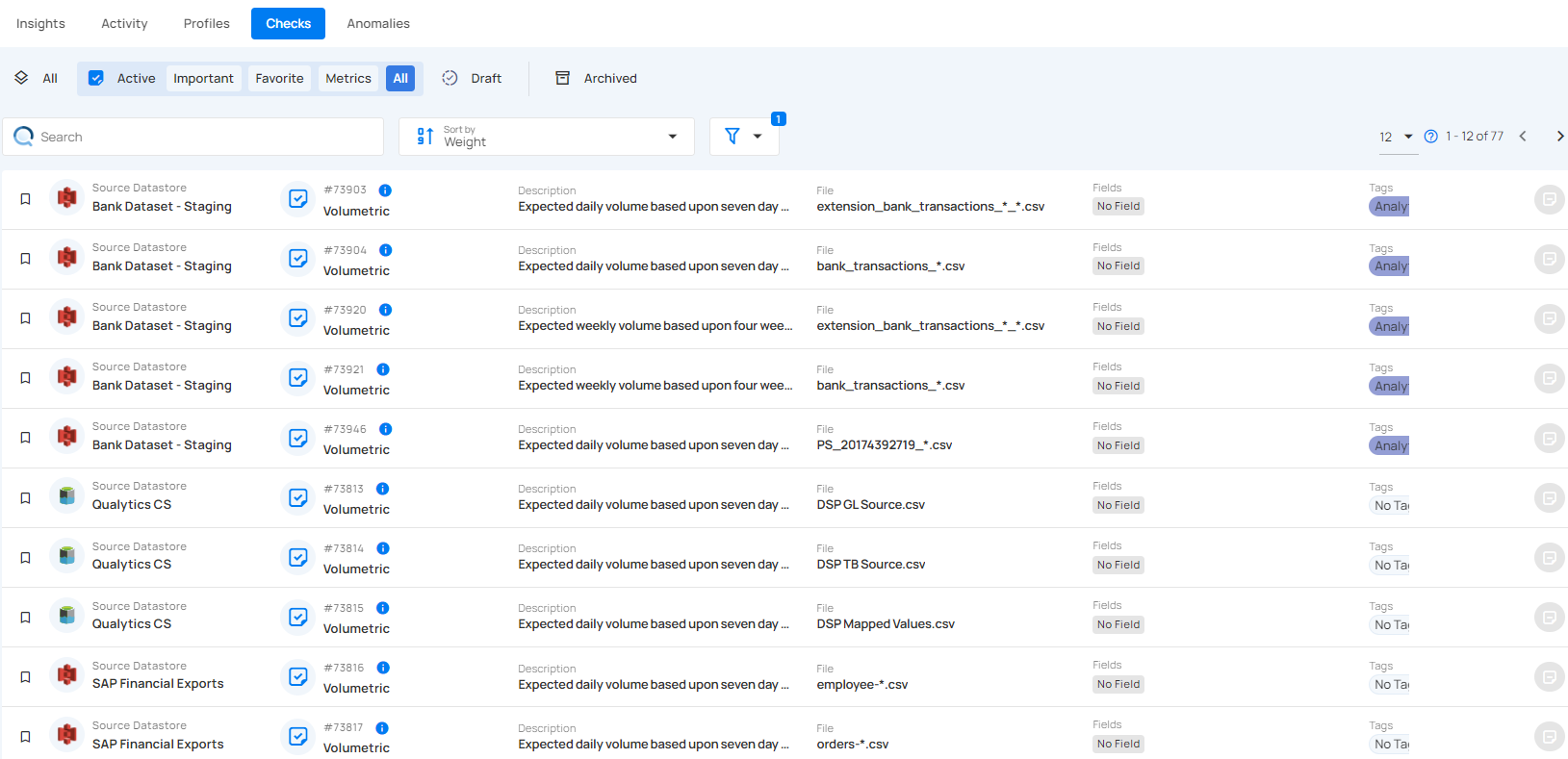Volumetric Check
Volumetric Check ensures data stability by monitoring dataset size fluctuations in rows or bytes. It detects anomalies by comparing current volumes against historical trends (daily, weekly, monthly). Users can configure rules for precise control, while automated threshold adjustments enhance accuracy over time.
Let's get started 🚀
Configure Volumetric Check
Step 1: Login into your Qualytics account and select the datastore from the left menu on which you want to add a volumetric check.
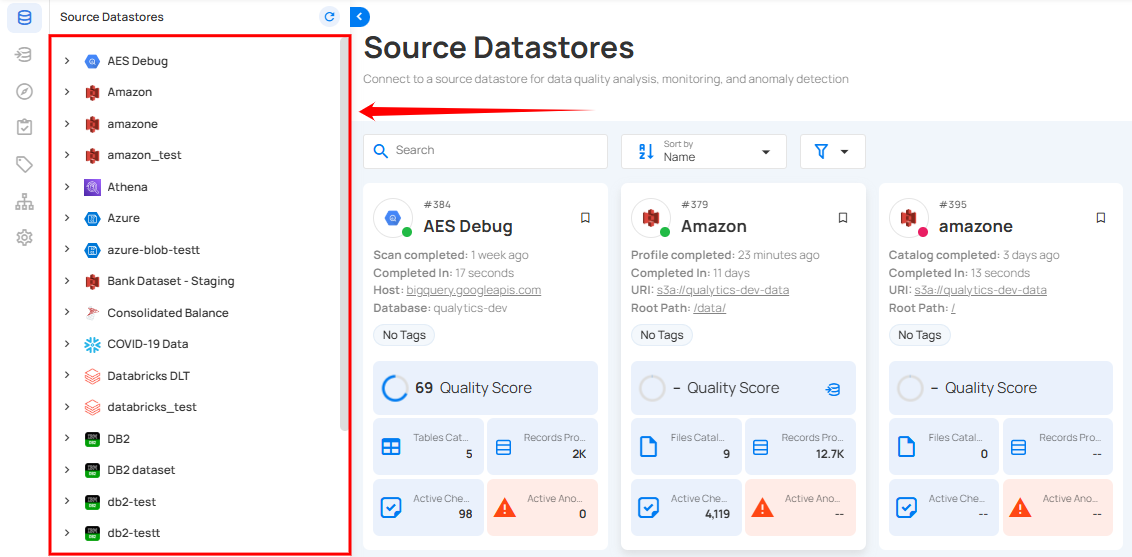
Step 2: Click the Add button and select Checks.
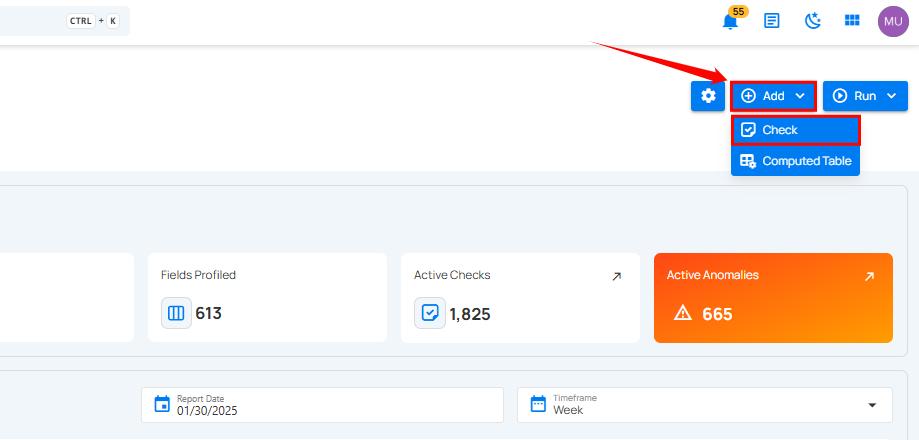
Step 3: A modal window appears. Enter the required details to configure the Volumetric Check.
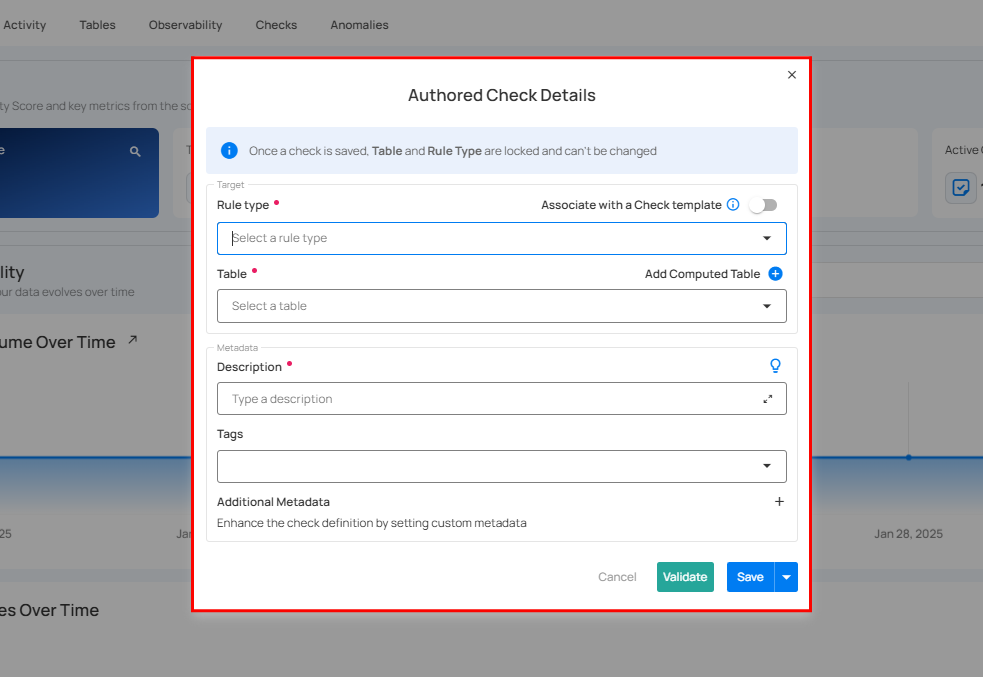
Step 4: Enter the details to configure the volumetric check:
| No. | Field | Description |
|---|---|---|
| 1. | Rule Type | Select the Volumetric Rule type from the dropdown. |
| 2. | Table | Select the table for the rule to apply. |
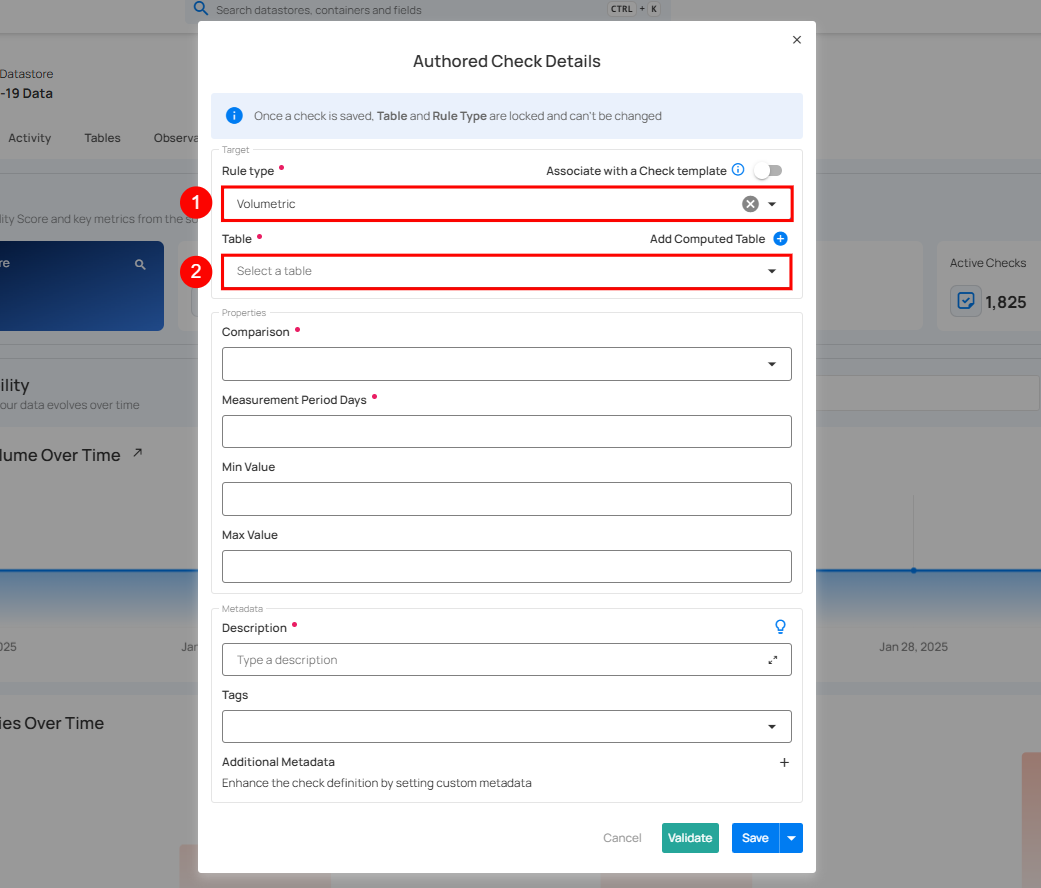
3. Comparison: Specifies the type of comparison: Absolute Change, Absolute Value, or Percentage Change:
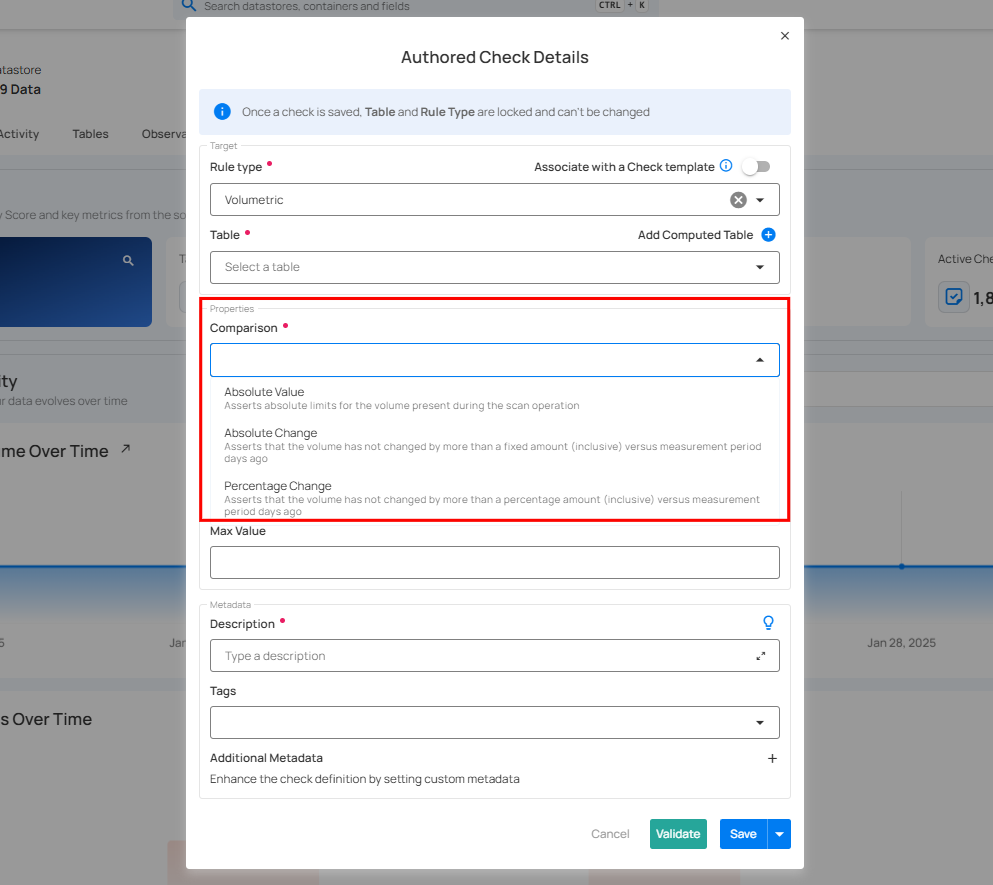
Details
Comparison Options
Absolute Value
The Absolute Value comparison works by comparing the change in a numeric field's value to a pre-set limit between Min and Max values. If the field's value changes by more than this specified range since the last relevant scan, an anomaly is identified.
Illustration
The value of the record in each scan should be within 100 and 300 to be considered normal
Thresholds: Min Value = 100, Max Value = 300
| Scan | Current Value | Anomaly Detected |
|---|---|---|
| #1 | 150 | No |
| #2 | 90 |
Yes |
| #3 | 250 | No |
| #4 | 310 |
Yes |
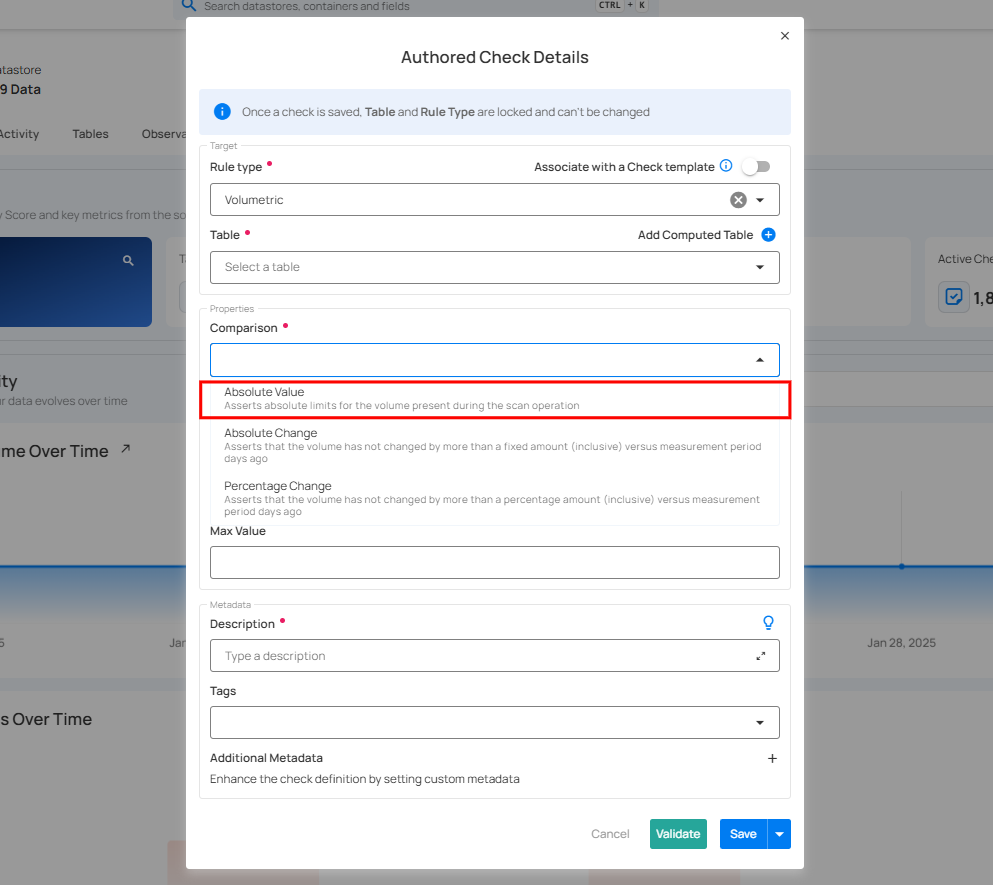
Details
Comparison Options
Absolute Change
The Absolute Change comparison works by comparing the change in a numeric field's value to a pre-set limit (Min / Max). If the field's value changes by more than this specified limit since the last relevant scan, an anomaly is identified.
Illustration
Any record with a value change smaller than 30 or greater than 70 compared to the last scan should be flagged as anomalous
Thresholds: Min Change = 30, Max Change = 70
| Scan | Previous Value | Current Value | Absolute Change | Anomaly Detected |
|---|---|---|---|---|
| #1 | - | 100 | - | No |
| #2 | 100 | 150 | 50 | No |
| #3 | 150 | 220 | 70 | No |
| #4 | 220 | 300 |
80 |
Yes |
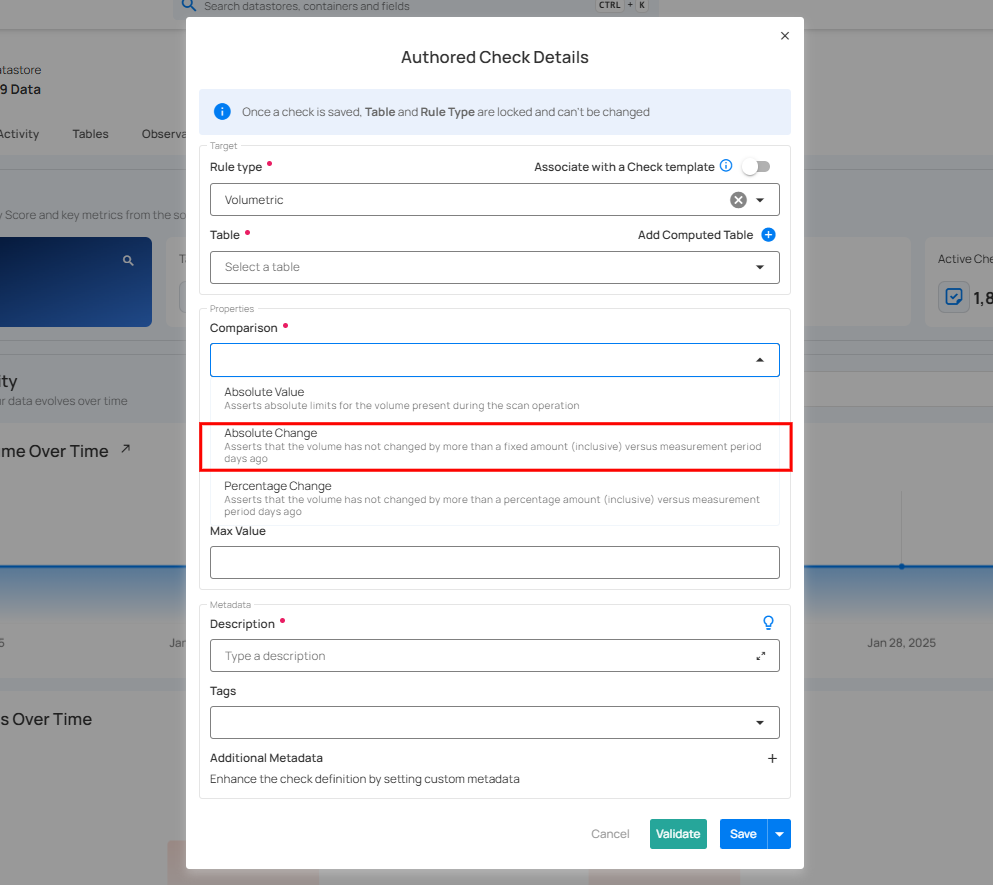
Details
Comparison Options
Percentage Change
The Percentage Change comparison operates by tracking changes in a numeric field's value relative to its previous value. If the change exceeds the predefined percentage (%) limit since the last relevant scan, an anomaly is generated.
Illustration
An anomaly is identified if the record's value decreases by more than 20% or increases by more than 50% compared to the last scan.
Thresholds: Min Percentage Change = -20%, Max Percentage Change = 50%
Percentage Change Formula: ( (current_value - previous_value) / previous_value ) * 100
| Scan | Previous Value | Current Value | Percentage Change | Anomaly Detected |
|---|---|---|---|---|
| 1 | - | 100 | - | No |
| 2 | 100 | 150 | 50% | No |
| 3 | 150 | 120 | -20% | No |
| 4 | 120 | 65 | -45.83% |
Yes |
| 5 | 65 | 110 | 69.23% |
Yes |
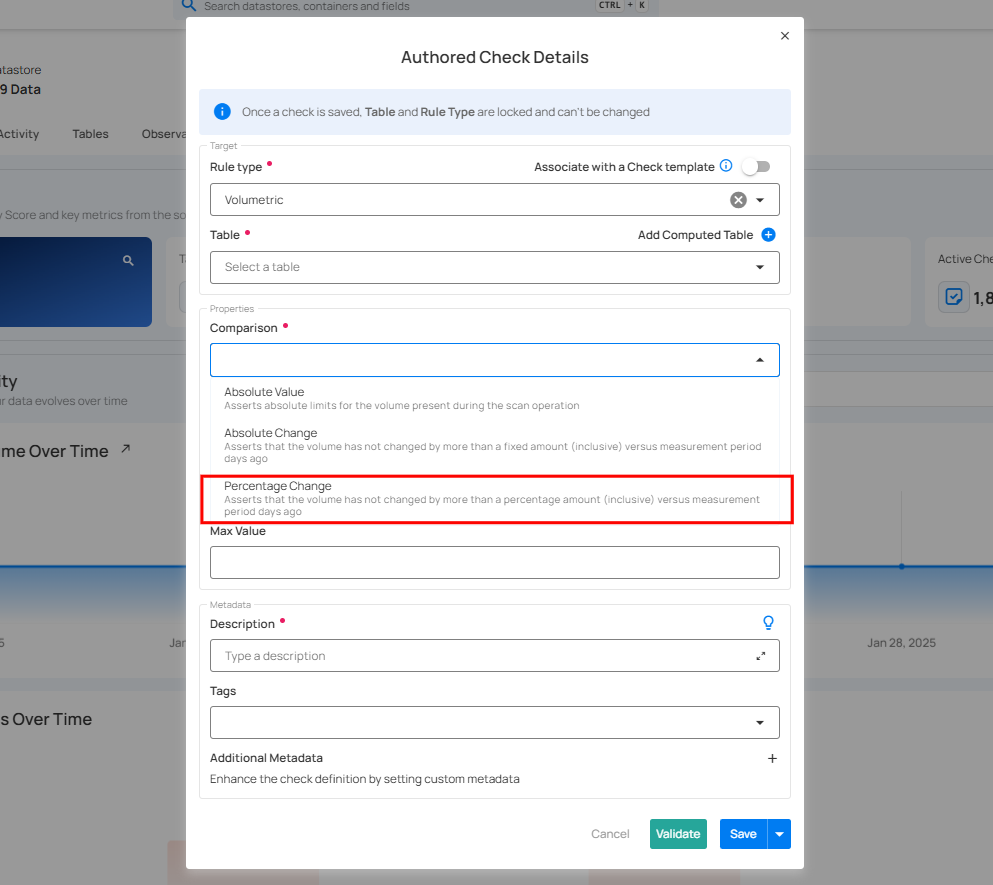
4. Measurement Period Days: Enter the number of days for measurement.
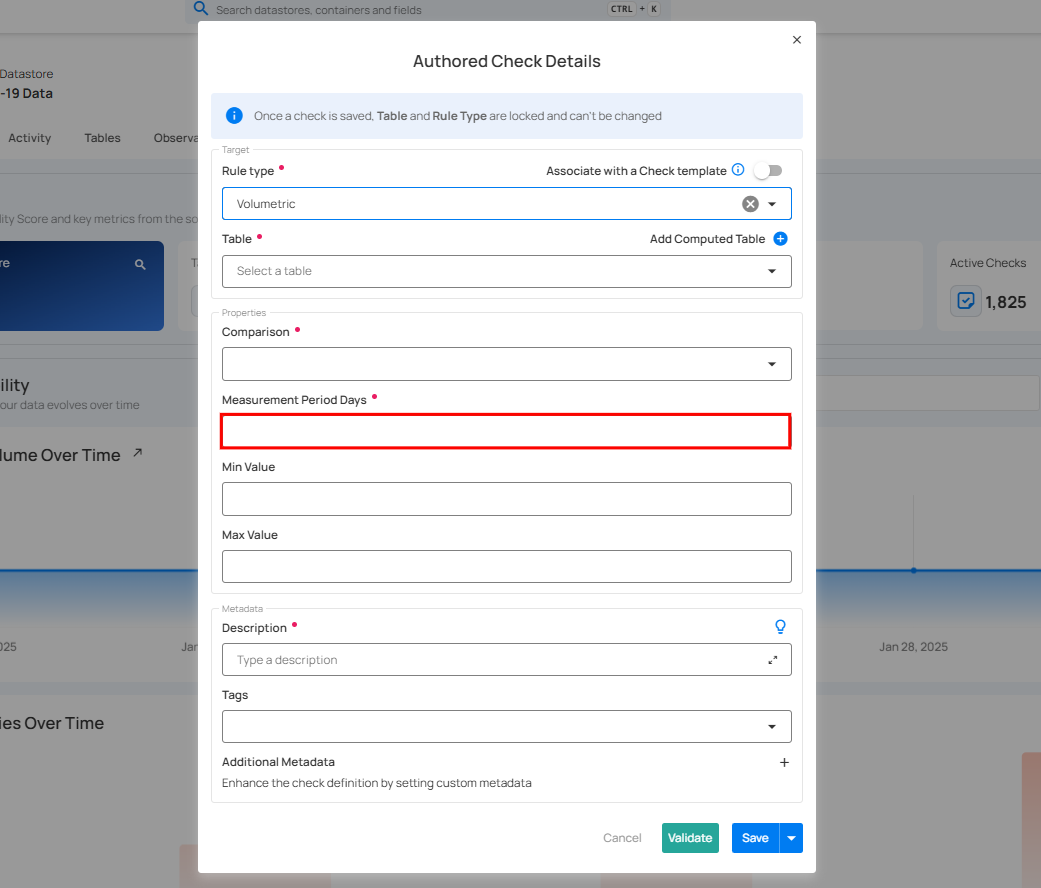
5. Threshold: At least the Min or Max value must be specified, and including both is optional. These values determine the acceptable range or limit of change in the field's value.
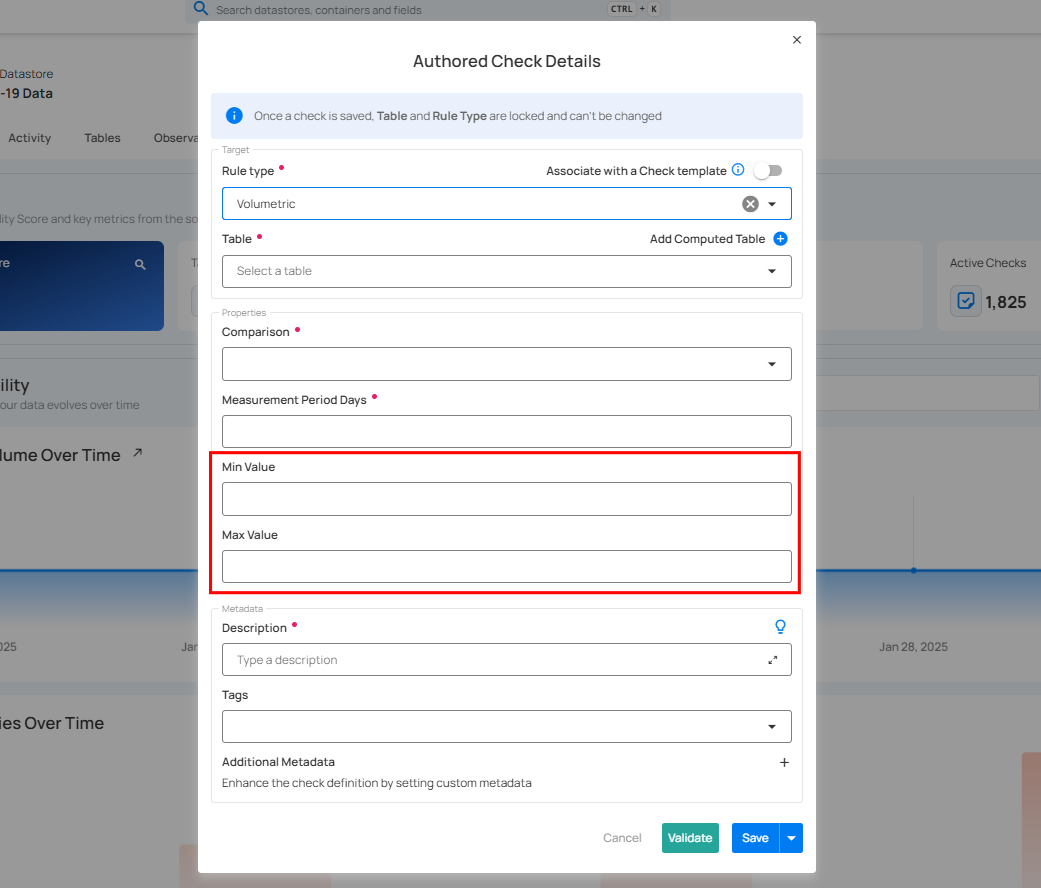
Min Value
-
Represents the minimum allowable increase in the field's value.
-
A negative Min Value signifies an allowable decrease, determining the minimum value the field can drop to be considered valid.
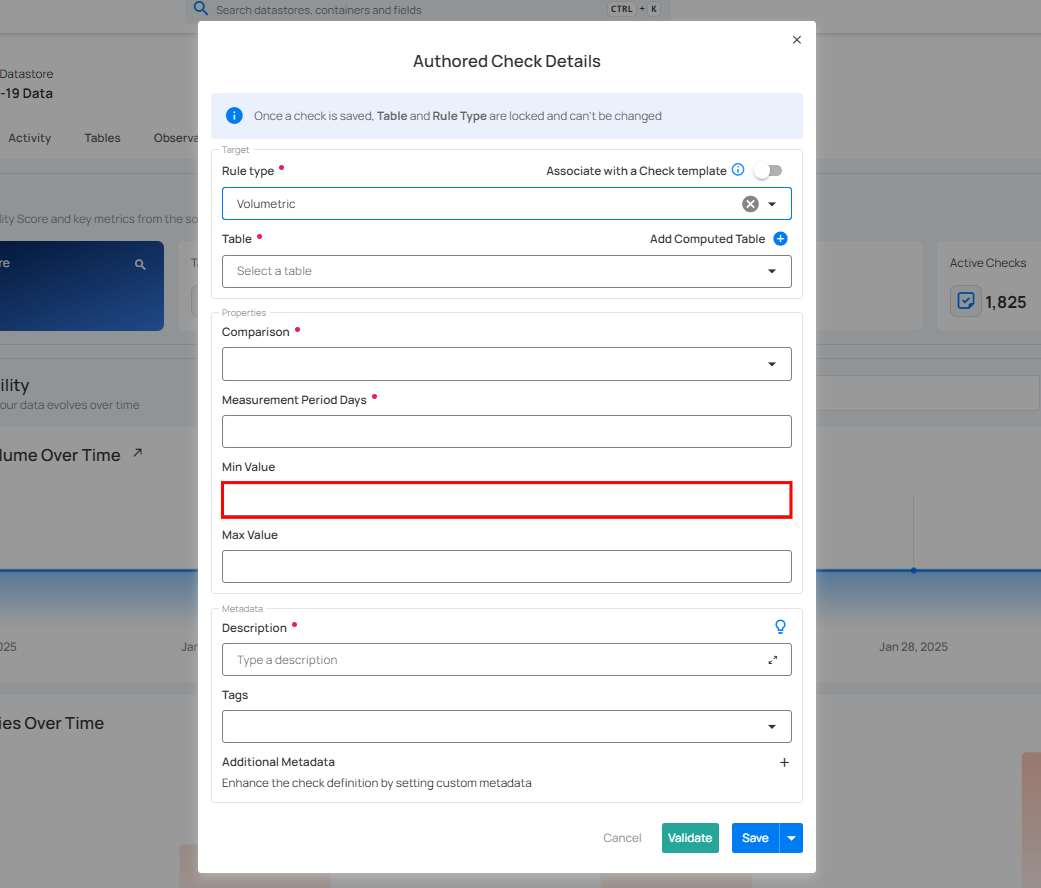
Max Value
- Indicates the maximum allowable increase in the field’s value, setting an upper limit for the value's acceptable growth or change.
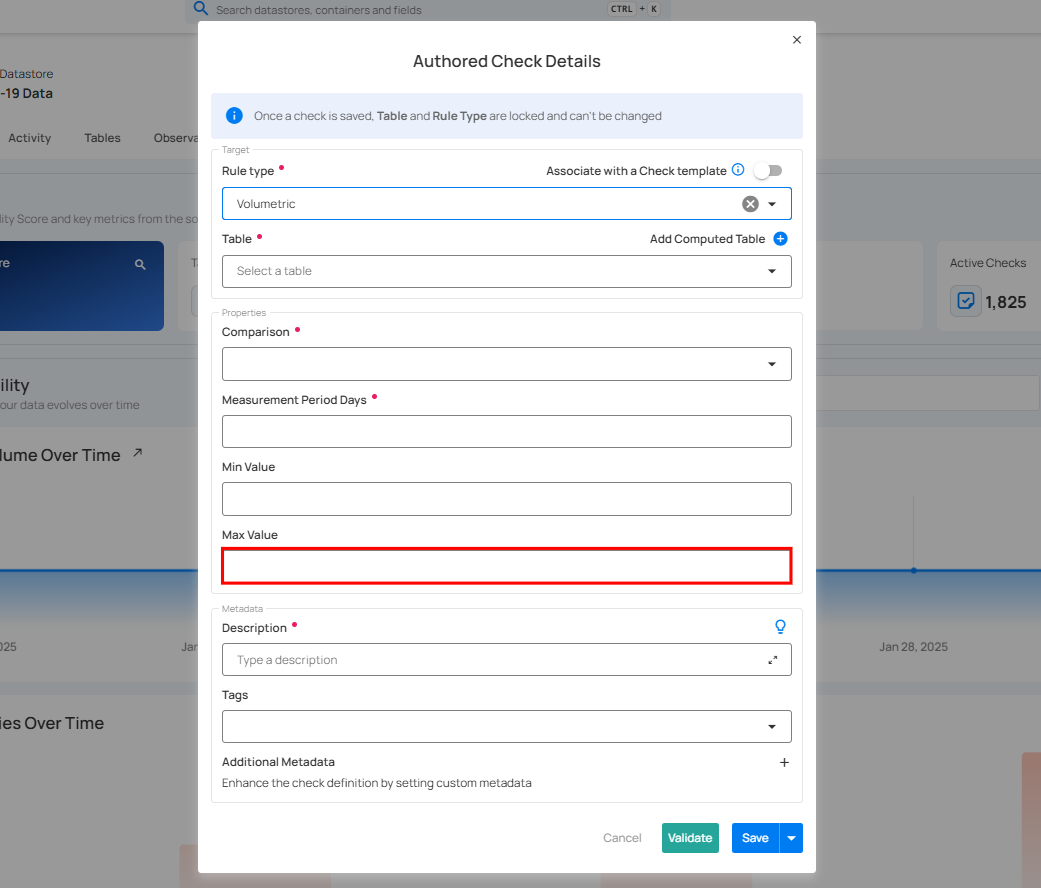
| No. | Field | Description |
|---|---|---|
| 6. | Description | Enter a description for the check. |
| 7. | Tag | Add tags for categorizing the check. |
| 8. | Additional Metadata | Add custom metadata for additional details. |
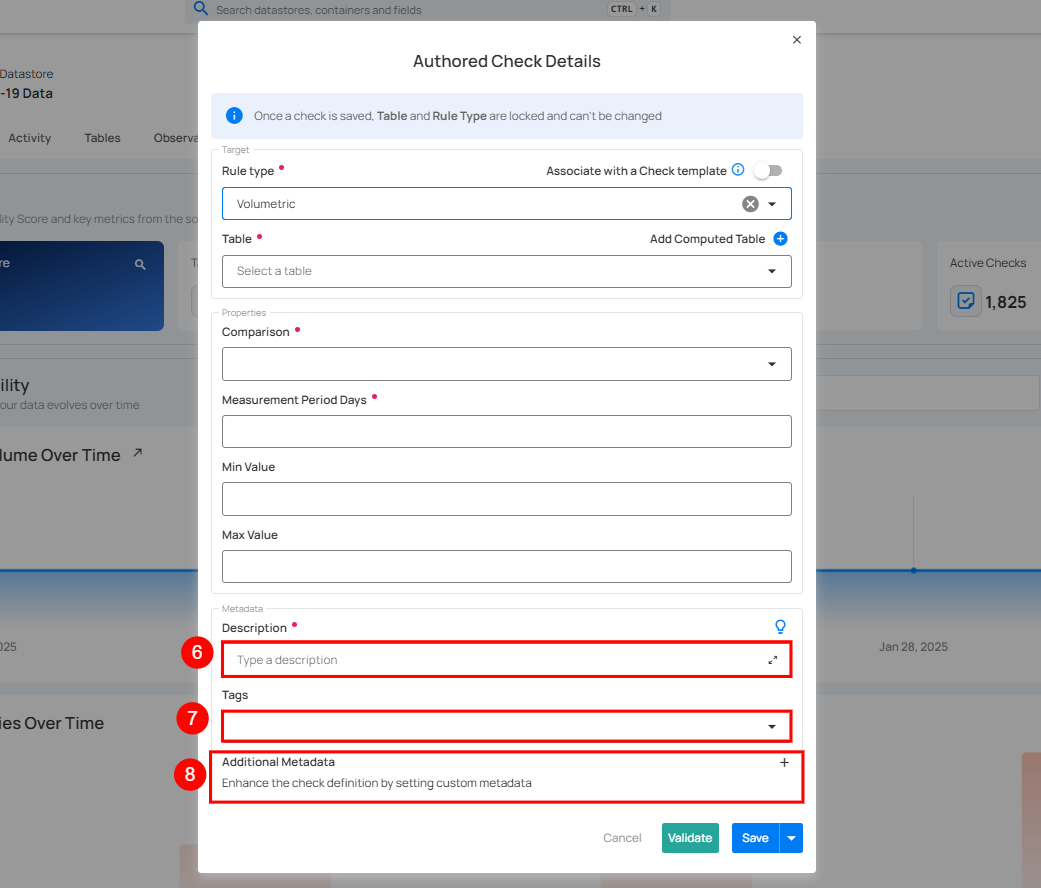
Step 4: After completing all the check details, click on the "Validate" button. This will perform a validation operation on the check without saving it. The validation allows you to verify that the logic and parameters defined for the check are correct. It ensures that the check will work as expected by running it against the data without committing any changes.
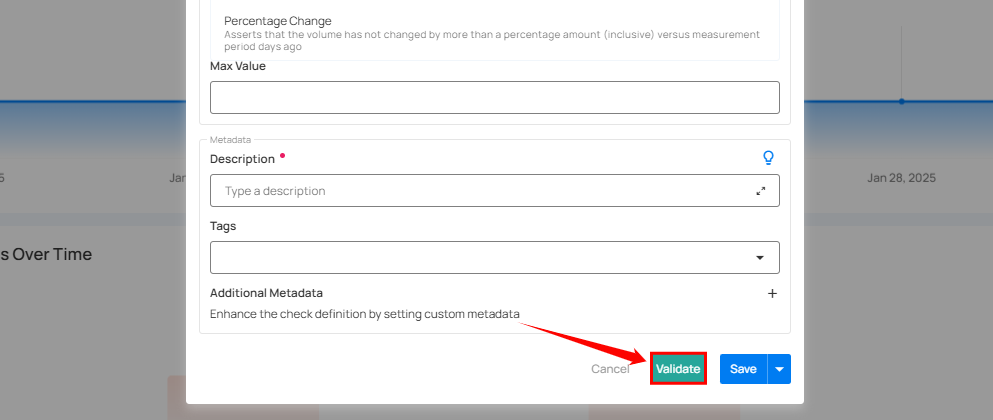
If the validation is successful, a green message will appear saying "Validation Successful".

Step 5: Once you have a successful validation, click the "Save" button.
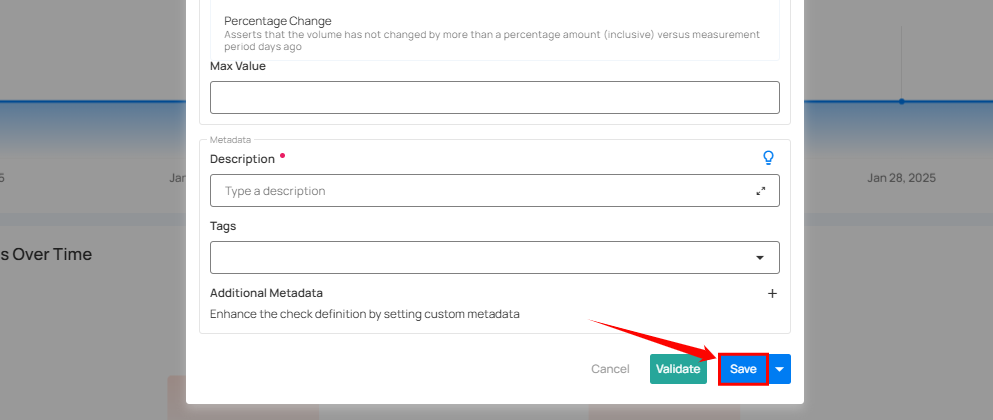
After clicking on the “Save” button your check is successfully created and a success flash message will appear saying “Check successfully created”.
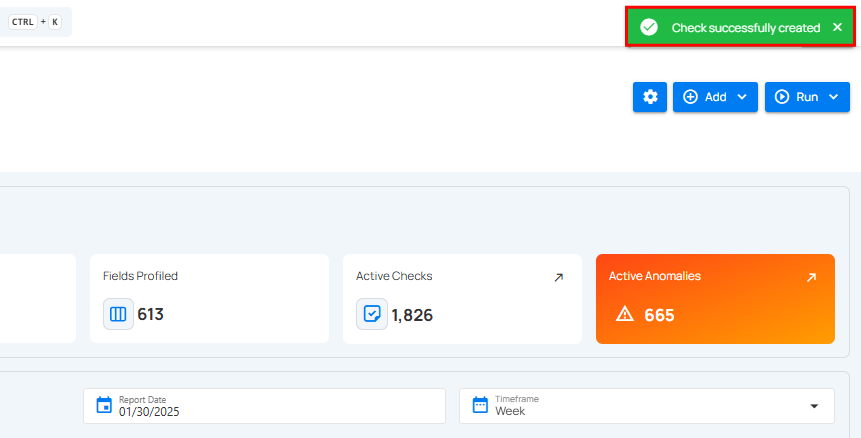
How It Works
The system automatically infers and maintains volumetric checks based upon observed daily, weekly, and monthly averages. These checks enable proactive management of data volume trends, ensuring that any unexpected deviations are identified as anomalies for review.
Automating Adaptive Volumetric Checks
The following Volumetric Checks are automatically inferred for data assets with automated volume measurements enabled:
-
Daily: the expected daily volume expressed as an absolute minimum and maximum threshold. The thresholds are calculated as standard deviations from the previous 7-day moving average.
-
Weekly: the expected weekly volume expressed as an absolute minimum and maximum threshold. The thresholds are calculated as standard deviations from the previous four weeks’ weekly volume moving average.
-
Monthly: the expected 4-week volume expressed as an absolute minimum and maximum threshold. The thresholds are calculated as standard deviations from the previous sixteen weeks’ 4-week volume moving average.
Scan Assertion and Anomaly Creation
Volumetric Checks are asserted during a Scan Operation just like all other check types and enrichment of volumetric check anomalies is fully supported. This enables full support for custom scheduling of volumetric checks and remediation workflows of volumetric anomalies.
Adaptive Thresholds and Manual Adjustments
Each time data volume is measured for an asset, the system automatically updates the inferred Volumetric Checks.
1.Automatic Threshold Adjustment:
-
The system sets initial thresholds at 2 standard deviations from the moving average.
-
Over time, these thresholds adjust automatically using historical data trends to improve accuracy.
2.Continuous Learning:
- The system monitors past data and adapts thresholds to detect unusual data volume changes.
3.Why It Matters:
-
Helps maintain data integrity by identifying unexpected volume changes.
-
Ensures quick detection and response to potential data issues.
